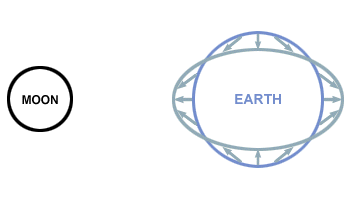Suggestions
Use up and down arrows to review and enter to select.Please wait while we process your payment
If you don't see it, please check your spam folder. Sometimes it can end up there.
If you don't see it, please check your spam folder. Sometimes it can end up there.
Please wait while we process your payment

By signing up you agree to our terms and privacy policy.
Don’t have an account? Subscribe now
Create Your Account
Sign up for your FREE 7-day trial
Already have an account? Log in
Your Email
Choose Your Plan
Individual
Group Discount
Save over 50% with a SparkNotes PLUS Annual Plan!
 payment page
payment page
Purchasing SparkNotes PLUS for a group?
Get Annual Plans at a discount when you buy 2 or more!
Price
$24.99 $18.74 /subscription + tax
Subtotal $37.48 + tax
Save 25% on 2-49 accounts
Save 30% on 50-99 accounts
Want 100 or more? Contact us for a customized plan.
 payment page
payment page
Your Plan
Payment Details
Payment Summary
SparkNotes Plus
You'll be billed after your free trial ends.
7-Day Free Trial
Not Applicable
Renews November 29, 2024 November 22, 2024
Discounts (applied to next billing)
DUE NOW
US $0.00
SNPLUSROCKS20 | 20% Discount
This is not a valid promo code.
Discount Code (one code per order)
SparkNotes PLUS Annual Plan - Group Discount
Qty: 00
SparkNotes Plus subscription is $4.99/month or $24.99/year as selected above. The free trial period is the first 7 days of your subscription. TO CANCEL YOUR SUBSCRIPTION AND AVOID BEING CHARGED, YOU MUST CANCEL BEFORE THE END OF THE FREE TRIAL PERIOD. You may cancel your subscription on your Subscription and Billing page or contact Customer Support at custserv@bn.com. Your subscription will continue automatically once the free trial period is over. Free trial is available to new customers only.
Choose Your Plan
For the next 7 days, you'll have access to awesome PLUS stuff like AP English test prep, No Fear Shakespeare translations and audio, a note-taking tool, personalized dashboard, & much more!
You’ve successfully purchased a group discount. Your group members can use the joining link below to redeem their group membership. You'll also receive an email with the link.
Members will be prompted to log in or create an account to redeem their group membership.
Thanks for creating a SparkNotes account! Continue to start your free trial.
We're sorry, we could not create your account. SparkNotes PLUS is not available in your country. See what countries we’re in.
There was an error creating your account. Please check your payment details and try again.
Please wait while we process your payment

Your PLUS subscription has expired
Please wait while we process your payment
Please wait while we process your payment

The Principle of Equivalence
The mass used in Newton's Second
Law,  = mi
= mi is usually called the inertial mass. This mass is found with
respect to a standard by measuring the respective acceleration of the mass and
the standard when they are made to exert a force on one another. However, when
two masses are weighed on a balance, the measurement records the gravitational
force that is exerted by the earth on each mass that is measured. The mass
determined in this way is called the gravitational mass and it is this
mass that appears in Newton's Law of Universal Gravitation. The assertion
that mi = mg is called the Principle of Equivalence.
is usually called the inertial mass. This mass is found with
respect to a standard by measuring the respective acceleration of the mass and
the standard when they are made to exert a force on one another. However, when
two masses are weighed on a balance, the measurement records the gravitational
force that is exerted by the earth on each mass that is measured. The mass
determined in this way is called the gravitational mass and it is this
mass that appears in Newton's Law of Universal Gravitation. The assertion
that mi = mg is called the Principle of Equivalence.
There is no obvious reason why the inertial and gravitational masses should be equal. In fact, if two objects have inertial masses m1 and m2, and when tested by a balance are found to have equal weights w1 and w2, then:
| w1 = w2âá’m1g = m2g |
Einstein's General Theory of Relativity is based on another principle of equivalence. This asserts that to a local observer (an observer inside the system), the effects experienced because of an acceleration are indistinguishable from the effects caused by a gravitational field. If an astronaut was trapped inside a spaceship with no window, and the spaceship was accelerating upwards at 9.8 m/sec2, there is no experiment he could do to determine whether he was still on earth, or accelerating at a remote location in outer space.
In addition to the force of gravity from the earth, every object on the earth
must necessarily feel a force from the moon and the sun. However, the earth is
in free fall in relation to both these bodies. Just like the astronaut on the
space shuttle discussed in Gravity Near the
Earth the effects of the pull due to the
sun and earth are "cancelled out" because of the free fall. Yet this
cancellation is not exact; a small net force is exerted by both the moon and the
sun on all objects on the earth. For objects fixed to the surface, this force
is not significant. However, it does act on the oceans, causing them to bulge
toward the moon (or sun) where the moon is closest to the earth and the force is
strongest, and to bulge away where the force is weaker (on the opposite side
from the moon).

Please wait while we process your payment

